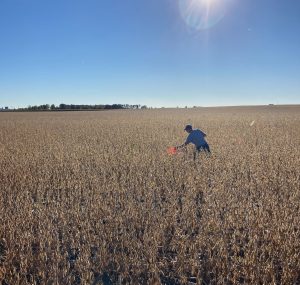HOME PREVIOUS ARTICLE NEXT ARTICLE
By Kelsey Banks, Ottawa-Rideau Regional Communication Coordinator
Many farmers hear the words ‘crop planning’ and instantly think, “what is the point? The grain markets along with other things change throughout the growing season, so why should I bother planning?”
The reality is yes, there are many factors that will influence the cropping season. We cannot control all these factors, but it is better to be prepared and have the tools available in case you come to a point of facing a negative factor.
Agronomists will tell you that crop planning can help your farm business, your crop inputs, retail product planning, and reduce your mental stress about the following year’s plans.
Putting together a crop plan might sound intimidating, but the process is made easier by breaking it into logical steps.
The first step is deciding what your end goals for the farm are for the next year. If you have livestock, how much silage or pasture will you need? Are you wanting to grow a crop like identity preserved soybeans or edible beans? Last, but certainly not least, what are your financial goals for both the farm business, and you and your family.

Local agronomist Scott Banks, grain harvest sampling in a field near Lancaster, ON.
The second step is deciding what crops will go in what fields. I highly recommend looking at each field’s history to see what crops have been grown and what challenges any of the crops may have had. This is a very important step in the crop planning process. For example, in a field that was previously soybeans and has had white mold issues, edible beans may not be a good choice. It is also important to remember what crop protection products were used and if they could harm the next crop.
The third step is deciding what seed and crop protection may be required. For seed, you can look back at step one and two. By putting together these steps you will have a better idea of how many acres you need to reach your goals. For crop protection, you can put together a plan that you are comfortable with if there is a negative factor that the crop may endure. I like to put together a ‘what if’ list. I look at what I might need ‘if’ I run into an issue related to the crop. This does not mean I pre-book all the products on that list, but it helps me relieve a bit of stress knowing I have my ‘what if’ plan.
The fourth and last step is creating your fertilizer plan. Each crop requires different nutrients. This should be kept in mind when creating a fertilizer plan for your crop and could help financially for the farm business. At this point, by looking at your most recent soil test results and looking at the following crop, you can decide what works best for your planned crop, planned field and overall goal.
During the crop planning process if you run into issues, please consult with an agronomist. Before meeting with an agronomist, you can prepare by thinking about what crops you plan to grow and your end goals for them. This will make the crop planning process easier.
If you have any questions about crop planning or would like assistance with creating your crop plan, please consult with your local agronomist.
HOME PREVIOUS ARTICLE NEXT ARTICLE
